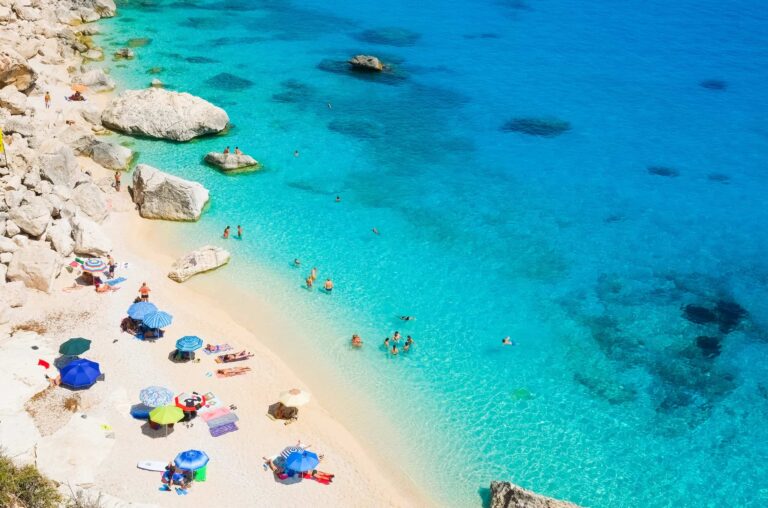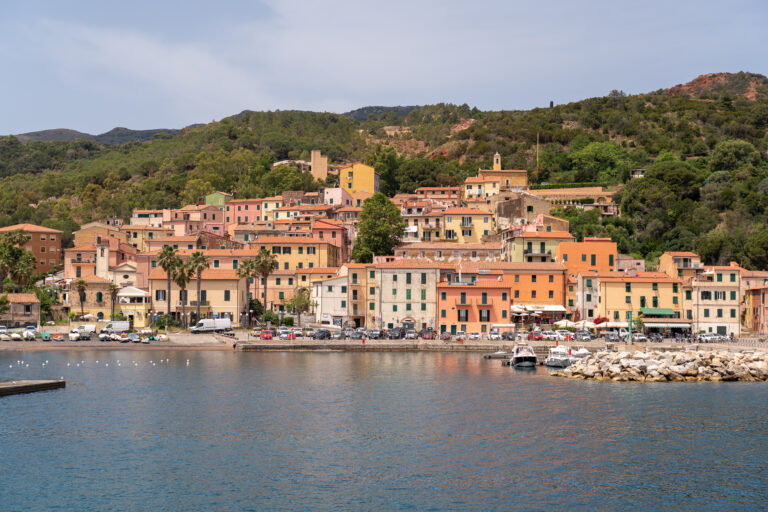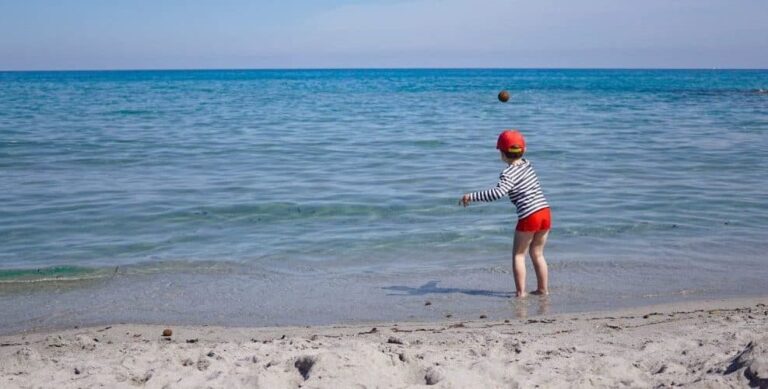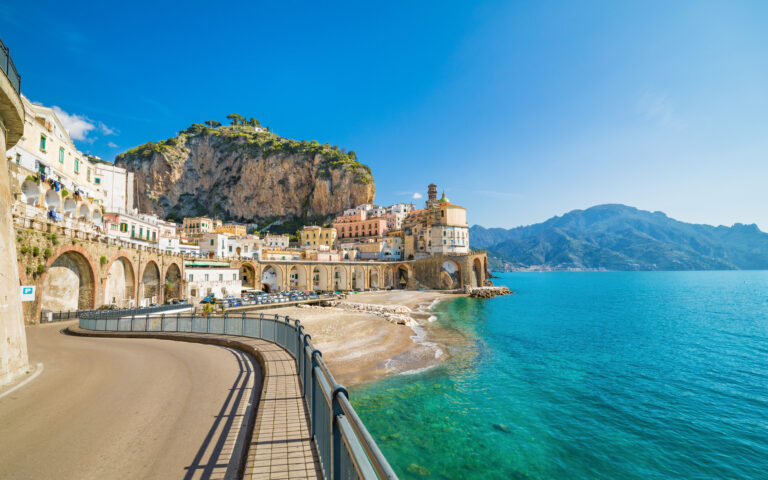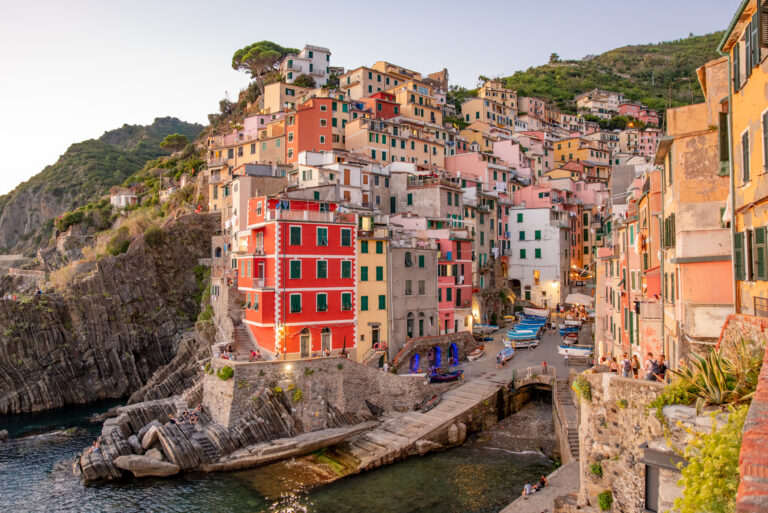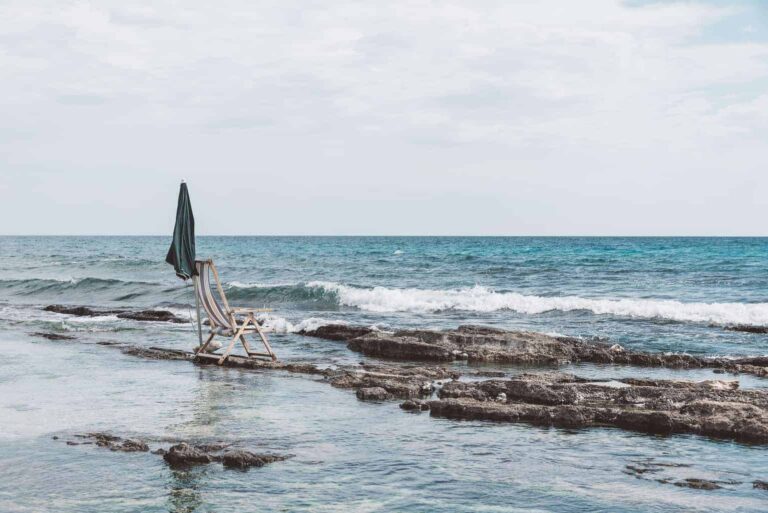Best things to do in Lucca, Italy
Lucca has been inhabited and built layer upon layer since the Etruscan times: the Romans left their traces in the defensive walls, the layout of the streets, and the beautiful oval square that was once the amphitheatre. The middle ages passed down intricate ecclesiastical buildings and characteristic tall towers within the old city. The late Renaissance saw the last renovation of the town walls, and a short Napoleonic government at the beginning of the 19th century focused on renovating the civic spaces, planting trees and gardens.
Lucky to escape the WW2 bombings, Lucca remained wonderfully preserved in all its layeredness. If you were wondering what to do in Lucca, we rounded up the most appealing Lucca attractions as well as interesting things to do around Lucca.
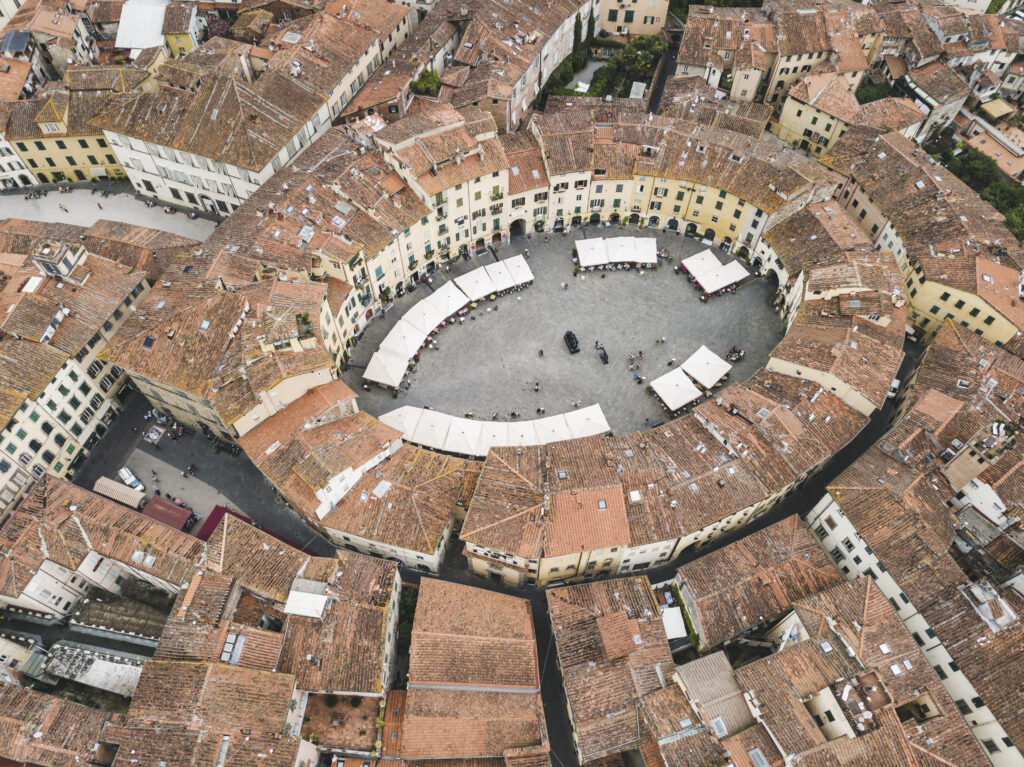
Is Lucca worth visiting?
Visiting Lucca Italy is a perfect way to experience Tuscany minus the crowds – it’s a living and breathing, lively little town, where locals gather for a passeggiata on top of the town’s walls, and elderly ladies sell their home-made pasta in vintage grocery stores.
The old town is compact and largely pedestrianized – perfect for exploring at a relaxed pace in a couple of days.
Top things to do in Lucca
Even though Lucca is a place to slow down and dive into Italian everyday life, Lucca sightseeing does not lag behind the more popular Tuscan destinations.
Accompanied with some of the best Tuscan food, artisanal products, and a lively music scene, Lucca provides a perfect dip into Tuscan culture.
Piazza dell’ Anfiteatro
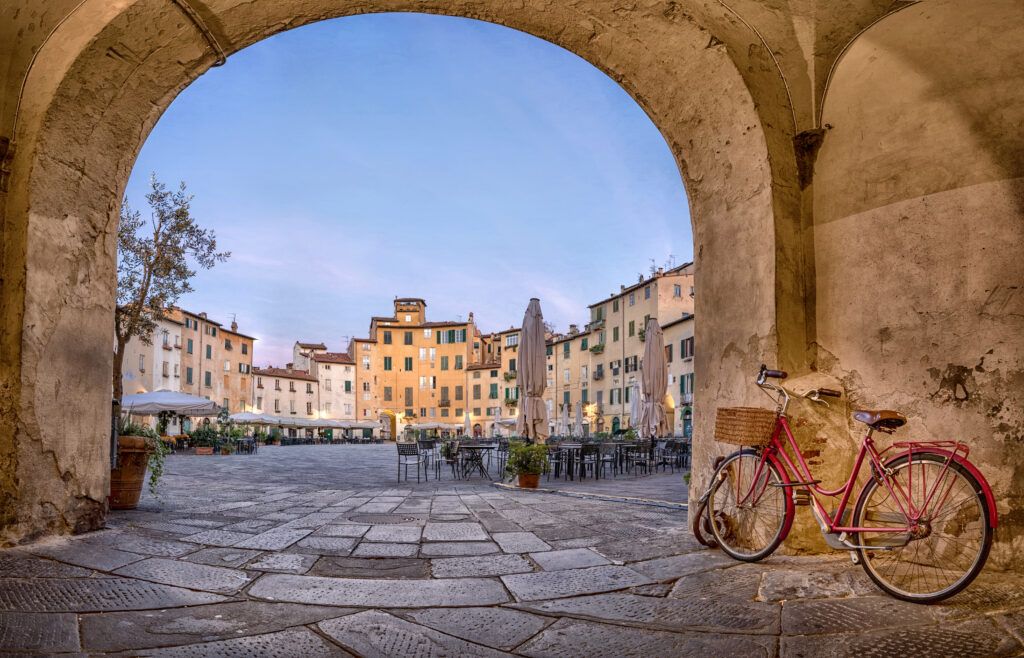
One of the not-to-be-missed and most loved places to see in Lucca is the beautiful Piazza dell’Anfiteatro. Lucca is almost synonymous with its oval piazza shaped by the Roman amphitheatre that preceded it. The arches of the former are still visible in the outside walls of the buildings that surround the piazza.
Today, it is a lively but not too crowded gathering place, with a couple of unpretentious bars perfect for soaking in the atmosphere, shops, and a majestic sculpture by the Polish artist Igor Mitoraj that dominates the scene with its contemporary interpretation of classical sculpture.
Admire the Views from the Rooftop of Torre Guinigi
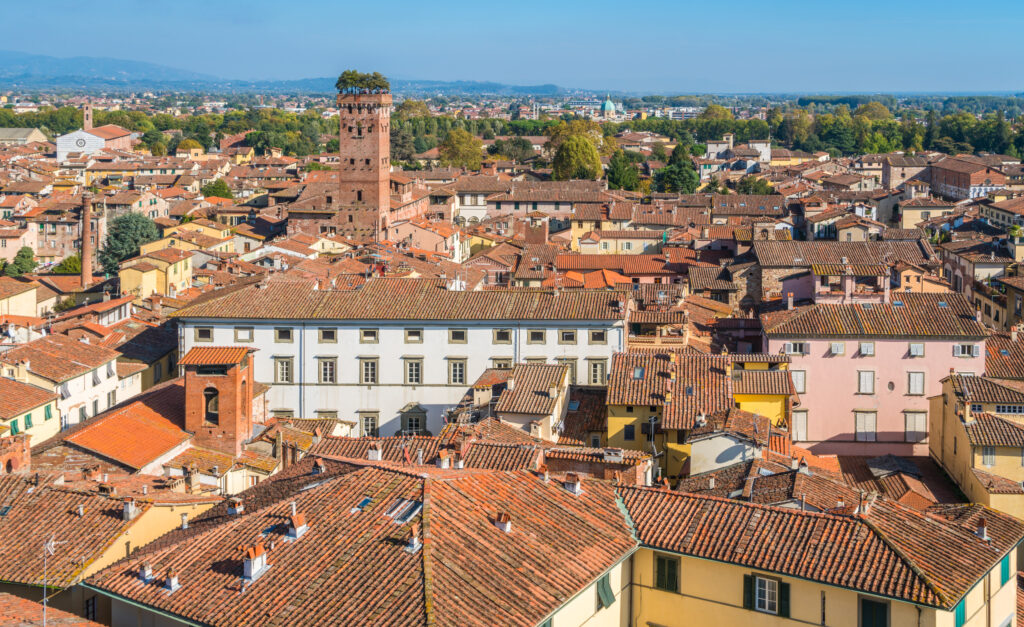
Belonging to the noble Guinigi family, during the medieval times, it was one of the 250 towers piercing through the Lucca skyline – now, there are only nine left.
In medieval Lucca, the rooftop served as a kitchen garden for the owners – in today’s terms, it sounds like a sketch from a forward-thinking modern city.
Looking up from the street, you will recognize it by the greenery of the oaks growing on top of it. The view that opens up on Lucca’s monochrome orange rooftops, medieval churches and towers, and Tuscan hills in the distance is truly spectacular.
Dive into Characteristic Pisan Romanesque Through Lucca’s Fabulous Churches
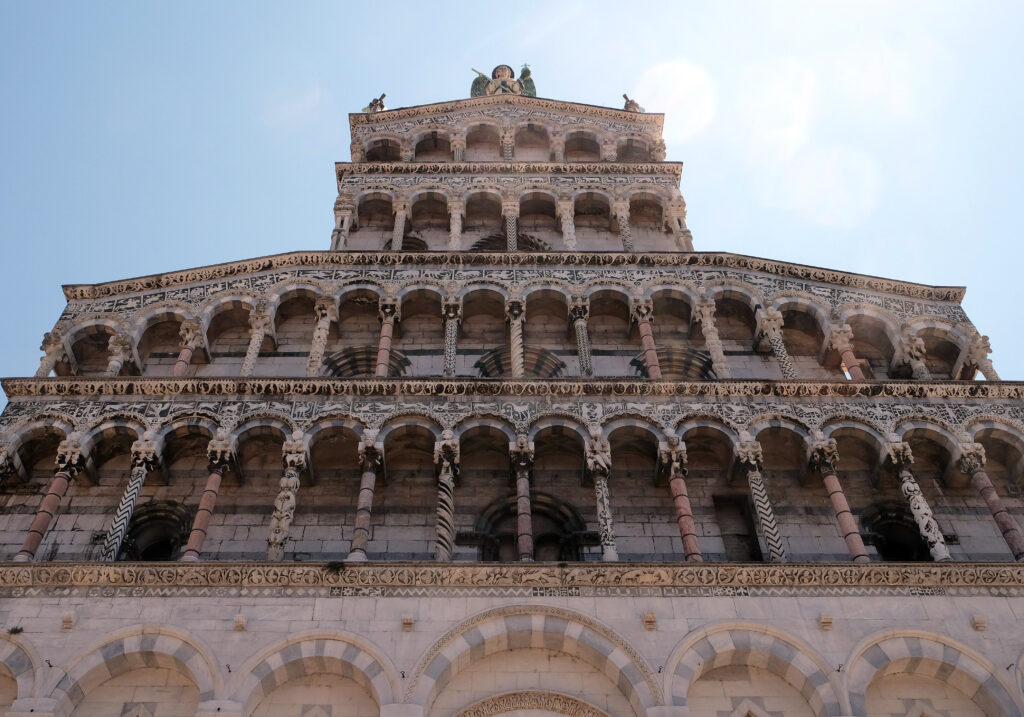
Most travellers to Italy are familiar with the architecture of the leaning tower, cathedral, and the baptistery of Pisa – less so with the churches of Lucca, but Pisan Romanesque spilled onto Lucca as well.
The facade of the Cathedral of San Martino is a wonderful example of that style, with superimposed rows of small loggias on delicately carved columns.
Chiesa di San Michele in Foro is an even more lavish example, and one of the obligatory things to see in Lucca. Four rows of arcades covering the small loggias enchant visitors with ingenious lace-like carving, shapes, and inlays of black, red, green, grey, white, and pink marble.
Have a Family Stroll and a Picnic Atop Lucca’s Tree-Lined Walls
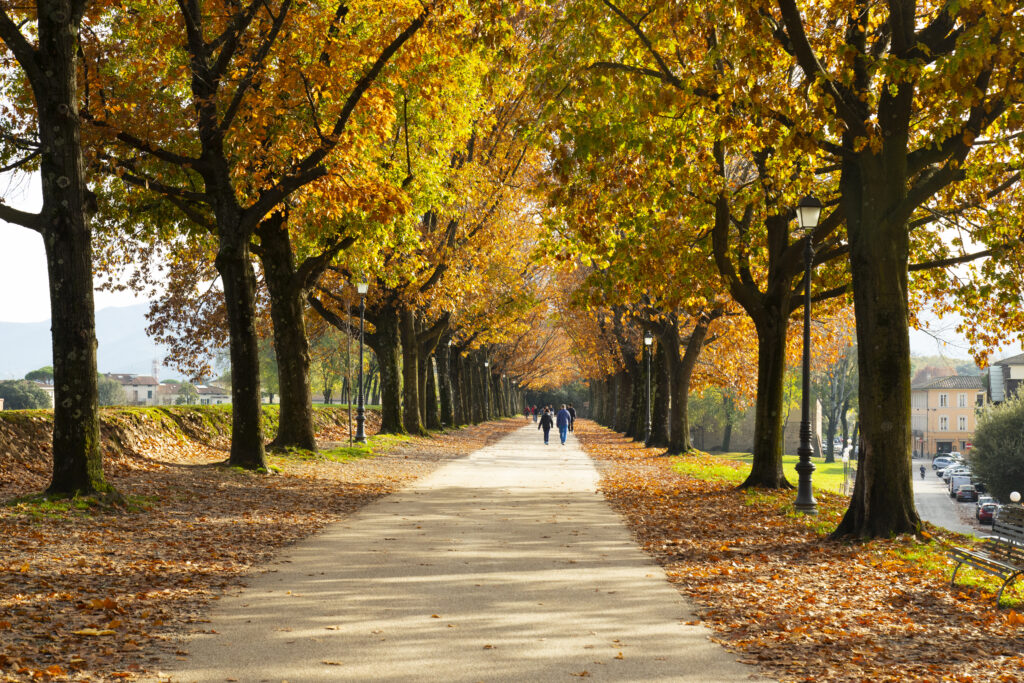
The walls, encircling the old town (about 4km in length) were built by the Romans and then renovated and expanded during the medieval times and the late Renaissance. In the 19th century, the newly appointed Duchess Maria Luisa of Bourbon transformed part of the walls into a public walkway and a park.
Today the walls are among the favourite places to visit in Lucca for travellers and locals alike: buzzing with joggers, cyclists, dog walkers, and families, they are a great spot to experience Lucca with kids.
Pick up some delicious Tuscan affettati (cured meat) and cheese in one of the local delis, and enjoy a picnic with a panoramic view of the Apuan Alps on one, and the old city on the other side.
Shop for Uniquely Tuscan Goods
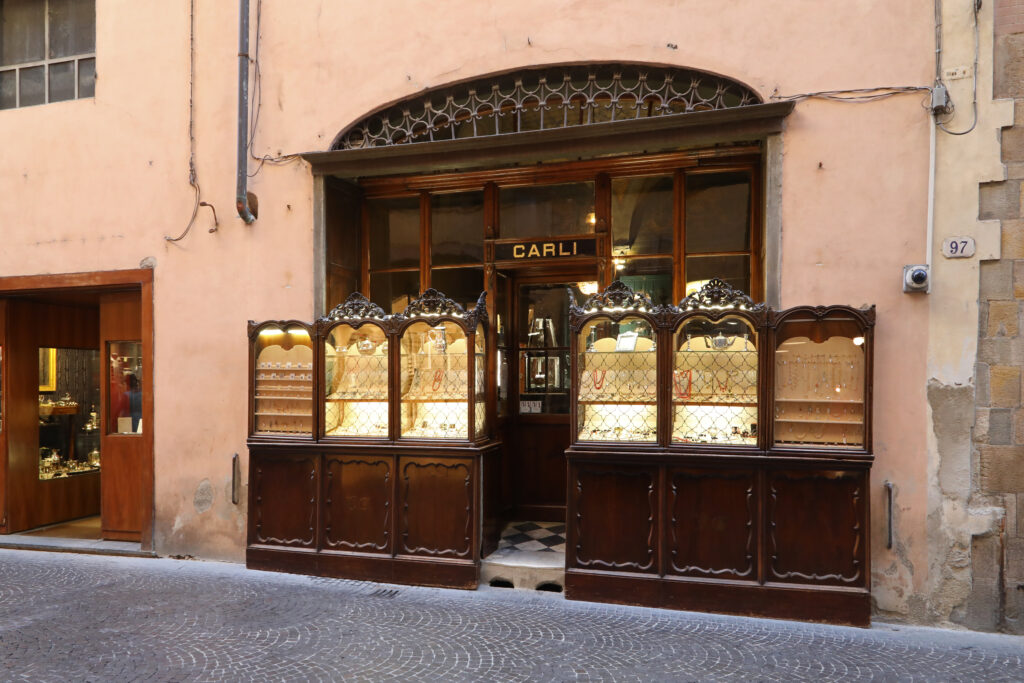
Wheater it’s Tuscan-made leather, clothes, cheese, wine, chocolate, fragrances, or washable paper bags (stay tuned for this one), visitors to Lucca are spoilt for choice. Flanking the Piazza dell Anfiteatro to the west, cobbled Via Fillungo is the main shopping street, home to Italian fashion brands, boutiques, jewellery shops, delis, and cafes.
The shop-front of the oldest jewellery shop in town, the Gioelleria Carli (founded in 1655!) is worth the visit if only to marvel at its peculiar wooden display windows. Meanwhile, Zazzi dalla Mano keeps the local weaving tradition alive with handwoven scarves, shawls, and handbags.
Away from the main shopping street, you can find local wine, oil, pasta, and sweets at Vecchi sapori di Lucca, natural fragrances at Boutique Erbario Toscano, artisanal chocolate at Caniparoli Cioccolateria, or local liquor of aromatic spices and herbs called China elixir in Antica Farmacia Massagli.
The wine cellar of Enoteca Vanni is a real-life treasure cove with a wide selection of around 55,000 bottles, where you can taste and buy both local wine and rare finds from all around Italy.
And for something truly original, head to the Uashmama store on Piazza dell’Anfiteatro, run by a local family that invented the washable paper bag. What started as a simple bread bag made of durable, organic fibres treated with biodegradable wax, spread to a wide selection of beautifully crafted totes, handbags, and travel bags (a sustainable alternative to a leather bag!).
Relax in the Greenery of the Orto Botanico
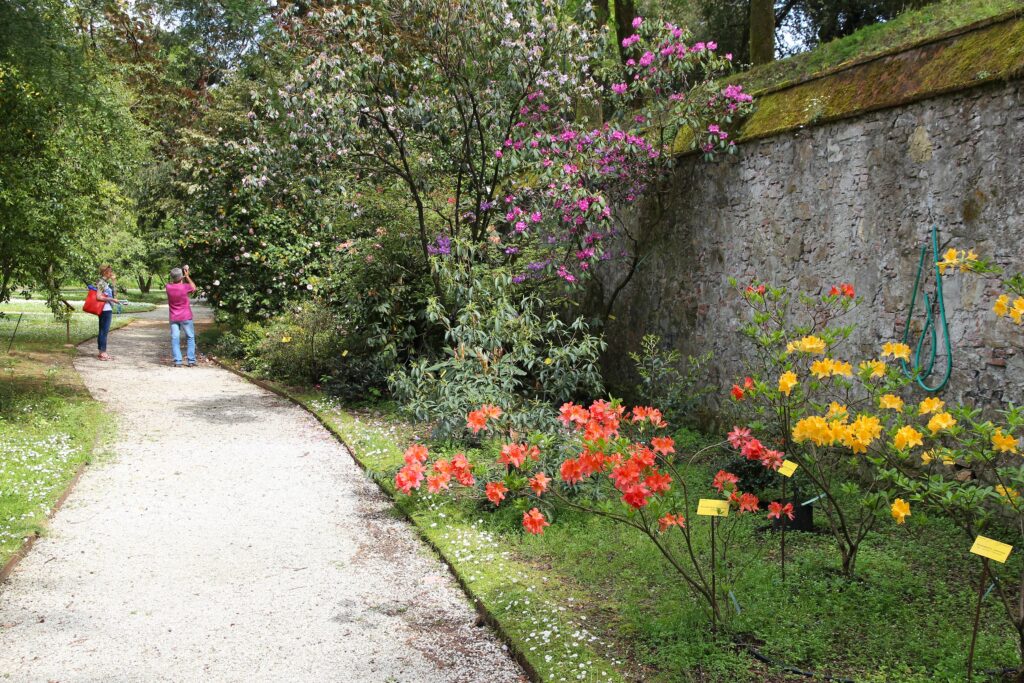
Nestled in the southeast corner within the city walls is the lovely 19th-century botanical garden, founded by Elisa Bonaparte Baciocchi, Napoleon’s sister and a sovereign of Lucca from 1805 to 1814.
The centre of the garden is home to the arboretum where centuries-old trees grow, the western part is dedicated to the autochthonous flora of the Lucchese mountains, and to the south, there is a lovely lily pond and a strip of flowering camellia and rhododendrons.
The northern part is dedicated to research, with a botanical school, a library, a museum, a wide collection of medicinal plants, and a spectacular Ginkgo Biloba tree. Here are both old and new greenhouses – the antique ones housing cacti and succulents, and the new ones housing fruit-bearing trees such as papaya, mango, or avocado.
Tuck into Succulent Lucchese Food
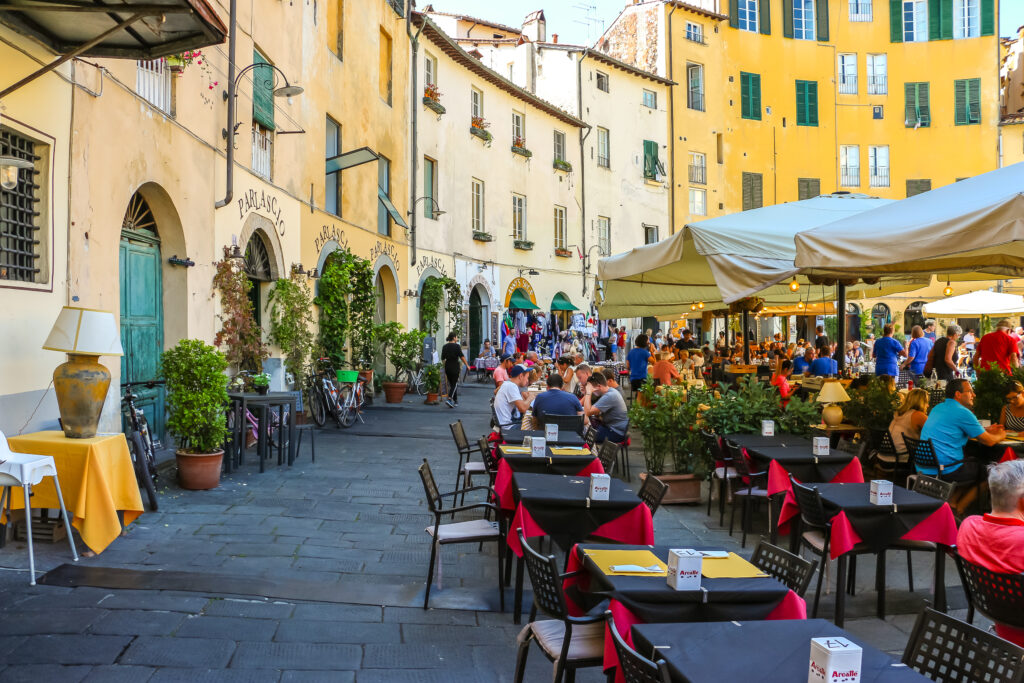
Not only does the incredible richness and versatility of the Italian cuisine vary from one region to another, but if you look closely, each town in Italy proudly keeps with the tradition of its typical dishes and products.
In Lucca, those are the buccellato – a sweet bread with raisins, and flavoured with anise seed, the tordelli Lucchese– pasta made with eggs, stuffed with meat, and covered in ragu, the garmugia – traditional vegetables and veal soup, the rovelline Lucchesi – veal escalopes sauteed with tomato sauce, onions, celery, carrots, and capers.
Lucca’s food is considered to be among the best in Tuscany, and the town has an enviable list of restaurants, trattorias, and deli shops offering local cuisine. Among the most loved in town are Buca di Sant’Antonio, Osteria da Pasquale, Ristorante Giglio, and Osteria dal Manzo (last one with a more contemporay twist).
Wander the Elegant Rooms and the Baroque Gardens of Palazzo Pfanner
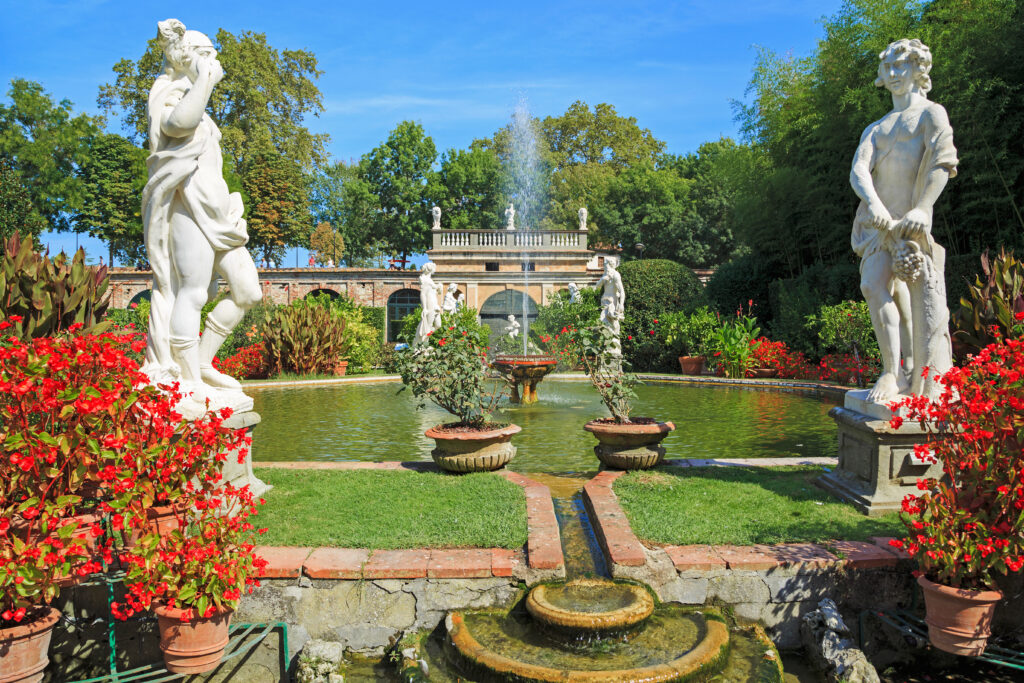
One of the most beautiful Lucca attractions is the 17th-century palace built and subsequently owned by two silk merchant families. The 18th century saw the addition of the monumental main staircase and redevelopment of the garden. Its latest owner, the Pfanner family, introduced beer to Lucca, and the premises served as a brewery from 1864 to 1929.
The focal point of the Italian-style Baroque garden is the large octagonal basin flanked by the sculptures representing Greek gods, around which box and laurel hedges, flowering magnolias, peonies, camellias, roses, geraniums, and a hundred lemon trees in antique terracotta pots are planted, providing for a lush and breezy look.
The 18th-century illusionist frescoes in the palace are worth the visit – fashionable in Lucca at the time, the painting style feigned the opening up of walls and expanding of space through architectural illusion.
Explore the City of Music
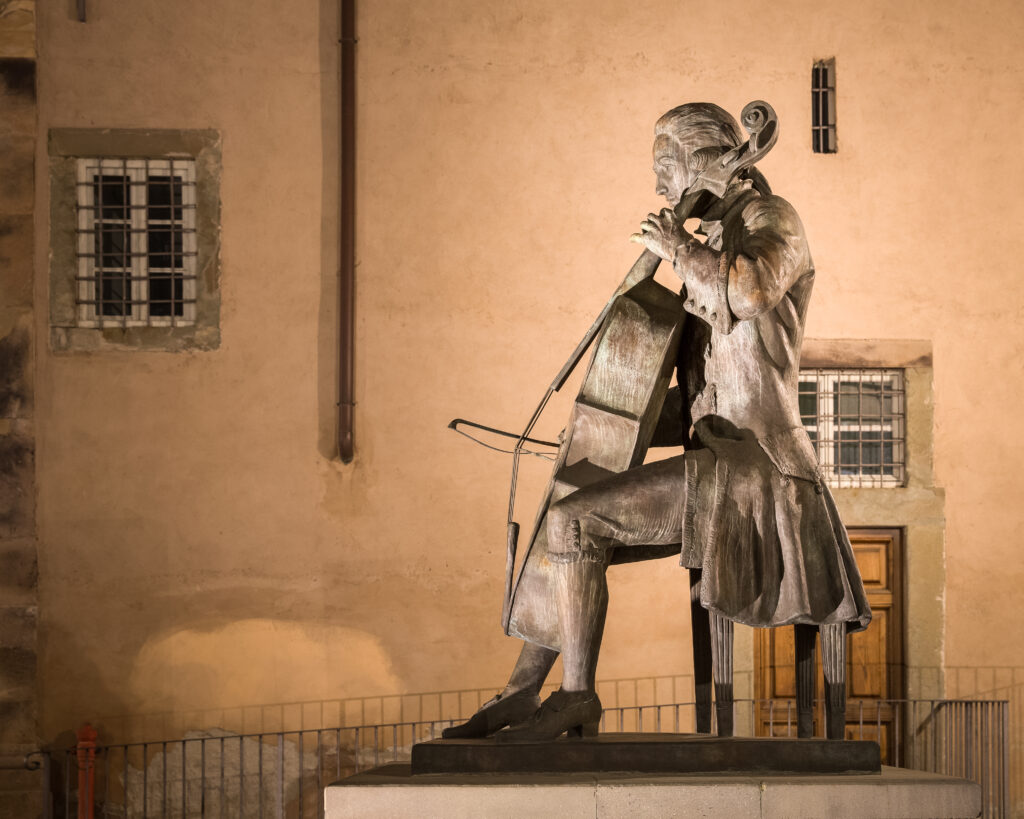
Hometown of the opera composer Giacomo Puccini of La Boheme, Tosca, Madame Butterfly, and Turandot fame, and cello composer Luigi Boccherini (author of one of the most beautiful concerts for cello in B- flat major)- Lucca kept tight bonds to music to this day.
Lucca Summer Festival brings big names to town each year, with concerts out in the open on the town’s piazzas, or on a plain outside the city walls in the former Ballila Field. In past years, Lucca Summer Festival hosted the likes of Ennio Morricone, Lauryn Hill, Erykah Badu, Mary J Blige, Gorrilaz, Nick Cave and the Bad Seeds, Sting, Elton John, and The Rolling Stones.
Classical music enthusiasts can travel back in time by visiting Puccini’s birth house, which keeps the author’s furniture, documents, music scores, and Steinway&Sons piano on which he composed Turandot. Puccini Festival at Torre del Lago is a lovely occasion to watch and listen to Puccini’s famous operas under the open sky in the lake setting.
Sip on an Aperitivo on Piazza Napoleone
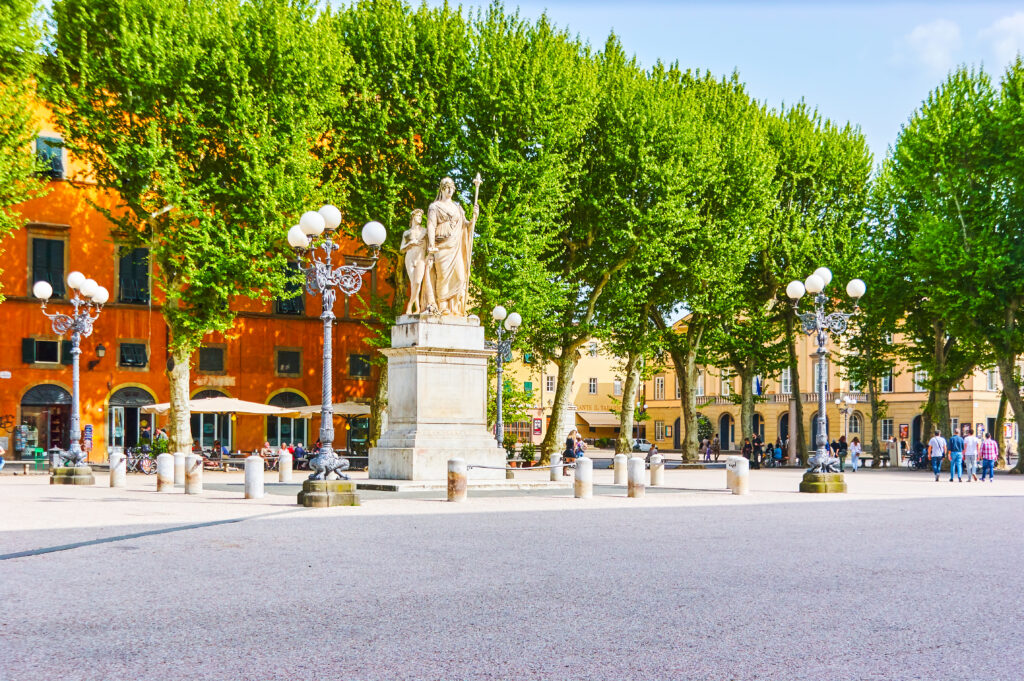
Called Piazza Grande by the locals, Piazza Napoleone is the political and social heart of the city, as well as the main square of Lucca. The piazza obtained its present look during Elisa Bonaparte’s rule – the entire square was redone to put emphasis on the Palazzo Ducale. It was planted with sycamore trees that still line the square and provide for its leafy appearance and cool shade in the summer months.
Perch yourself on the terrace of one of the bars, drink in hand- the Biadina perhaps, a traditional Lucchese liqueur made with aromatic herbs and served with pine nuts. In the summer months, the piazza hosts concerts of the Lucca Summer Festival, and in December, there is a Christmas market with an ice skating rink.
Day trips from Lucca
Nestled between the sea and the mountains in the Serchio river valley, and within an hour’s drive of other spectacular Tuscan towns – Lucca is a perfect base for exploring this part of Tuscany.
There are plenty of places to visit near Lucca, be it other urban escapes such as Pisa, Pistoia, or Florence, fabulous Baroque villas (with adjoining gardens), a cool art town overlooked by tourists, or the mountainous region of Garfagnana.
Villa Torrigiani
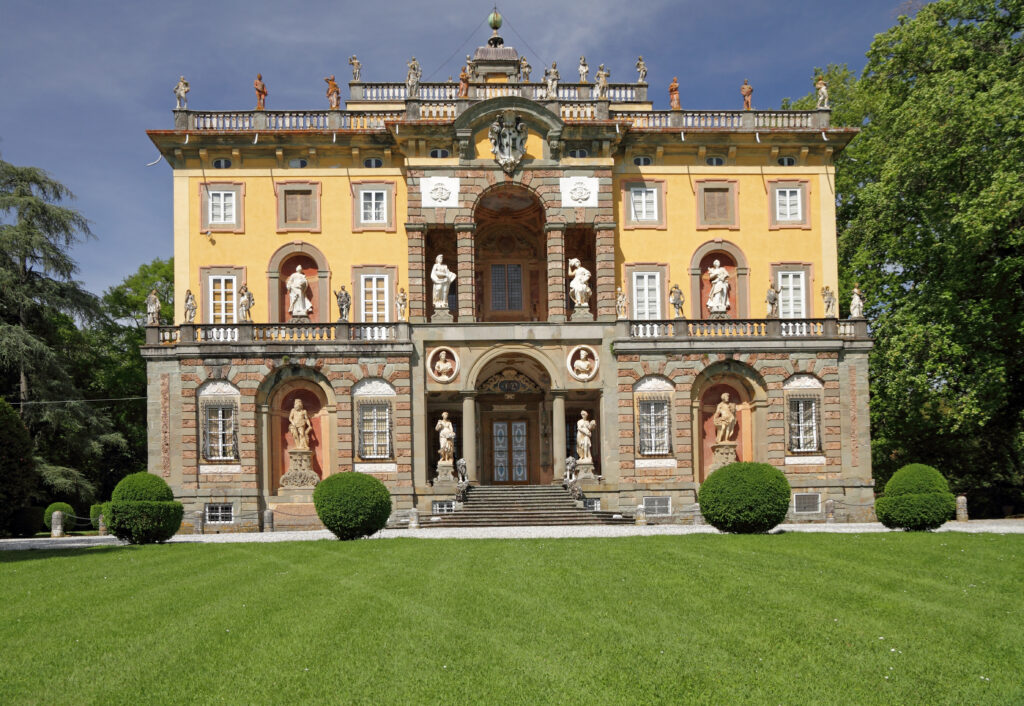
A scenic, cypress-lined avenue leads the visitors to the main Baroque facade and the alluring garden whose original designer is thought to be Andre Le Notre (the same landscape architect that designed the famous gardens of Versailles).
What remains of the Baroque garden is Giardino di Flora, and the grotto below it – with still functional giochi d’acqua (water jokes). Water jokes were a very chic garden feature of the time – a way to bemuse guests with unexpected water splashes. Today, the garden is a charming ensemble of manicured hedges, flowers, sculptures, and basins.
Villa Torrigiani is open every day from mid-March to the beginning of November (check the opening hours). It can be reached by car from Lucca in less than 30 minutes.
Garfagnana
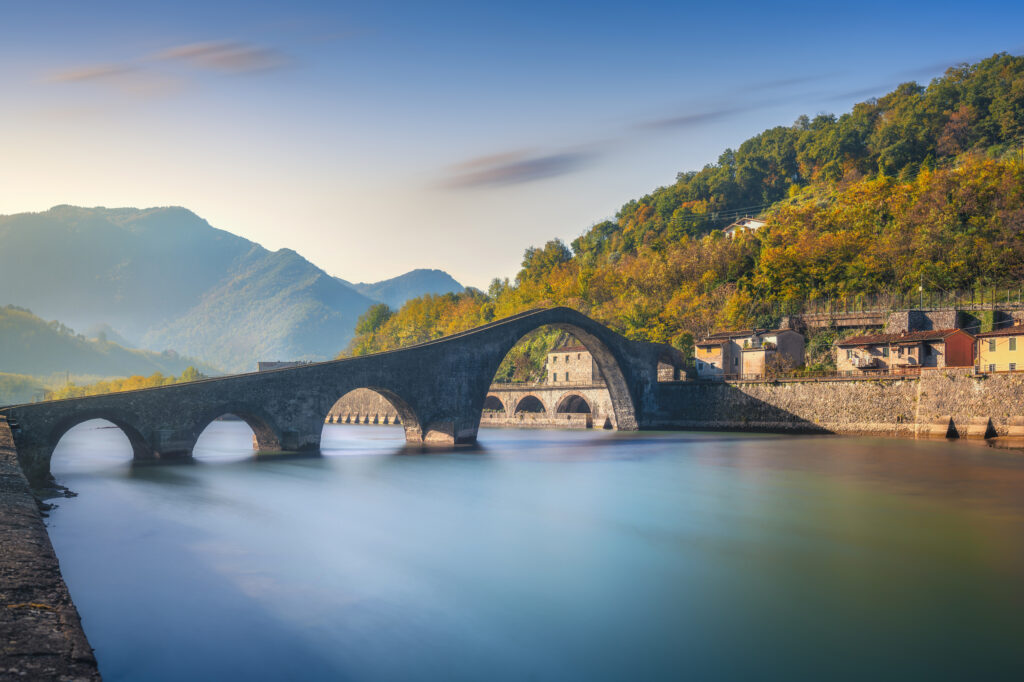
Garfagnana is a scenic mountainous region to the north of Lucca, traversed entirely by the Serchio river, and surrounded by the Apuan Alps and the Apennines. Known for its lush greenery, it is a perfect location for walking, hiking, mountain biking, and wandering the picturesque villages.
Medieval bridge Ponte della Maddalena in Borgo a Mozzano is worth the visit, and the region is also known for its cuisine – its staples being porcini mushrooms, lentils, and local farro.
Pietrasanta
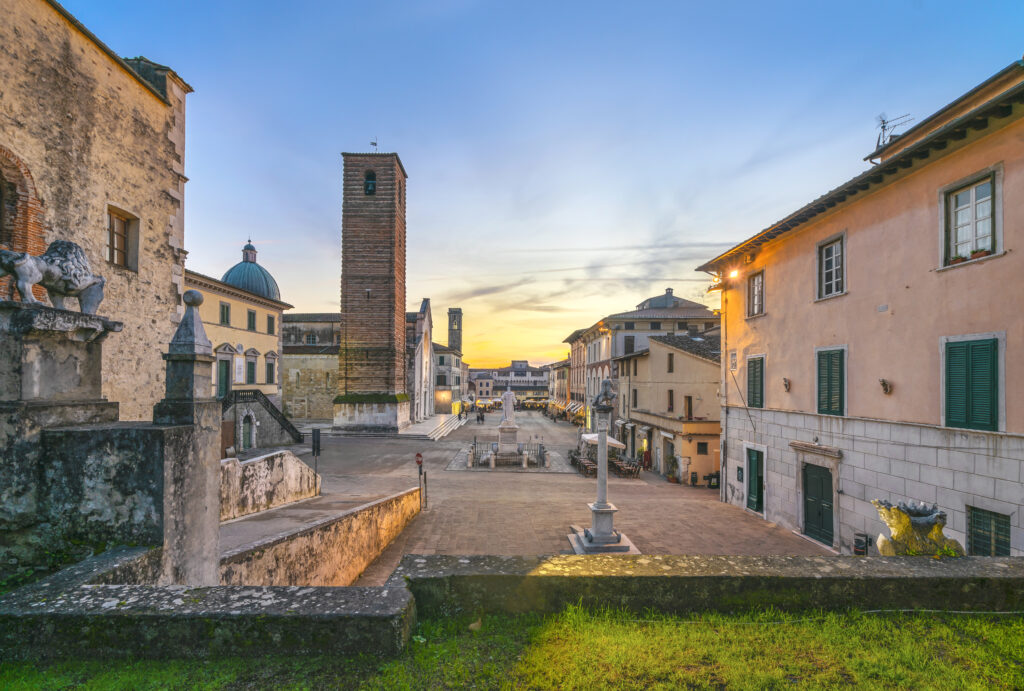
When in Lucca, don’t miss the opportunity to visit the often overlooked art town of Pietrasanta, the hub of international sculpture, with representatives such as Igor Mitoraj and Fernando Botero. Attracting artists from all over the world, the city became a kind of an open-air museum, the historic centre brimming with art galleries, boutiques, wine bars, and restaurants.
The artistic connection dates back to the Renaissance times when Michelangelo personally came to town to choose the marble from the nearby quarries. You can reach Pietrasanta within a 35-minute drive from Lucca.
Lucca and the surrounding area are the perfect way to get to know Tuscany, its artistic and culinary riches, without the crowds of Florence, or Pisa. Whether your passions are food, art, nature, history, or music, there are plenty of fun things to do in Lucca- but don’t forget to slow down and enjoy the atmosphere of Italian every day.
Written by Anja Bendeković Žuljević
Anja is an art historian that runs a craft distillery with her husband in the south of the Istrian peninsula, Croatia. She likes to travel slowly, most often to Italy, as she believes that the Italians cracked the secret of the good life (and there’s only one way to prove it).

